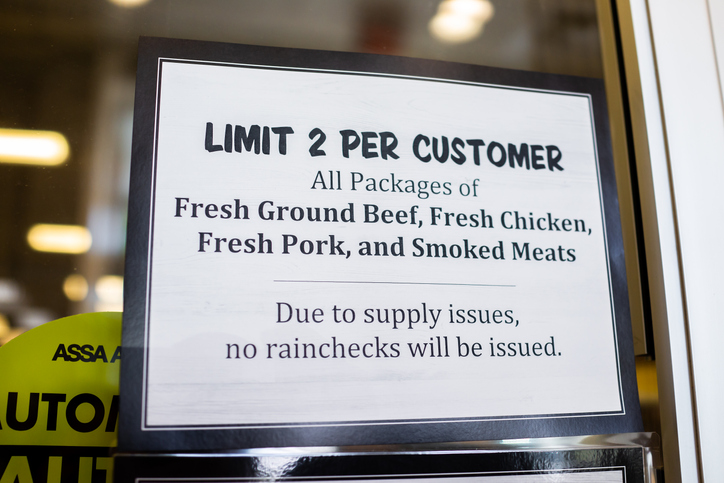No ag producer likes to see their work go to waste.
Whether it is a crop, milk, or livestock, no one involved in agriculture wants their products to go anywhere other than to consumers. That is what makes the COVID-19 crisis particularly difficult for agriculture – food continues to be produced but, in many cases, it is not reaching its intended destination.
In April the president of Tyson meats warned of a nationwide meat shortage. Milk producers are working to find the middle ground between keeping their cattle healthy and maintaining their income. Produce growers are allowing cucumbers, lettuce, and other fresh crops to rot in the fields because they cannot cover the expense to harvest and ship them.
The agricultural supply chain in the United States is people-driven and requires a great deal of hands-on work. Despite the ending of the state of emergency order and the partial reopening of restaurants, farms and ranches are still at loose ends when it comes to keeping everything moving.
Amidst the chaos there are a few important things to remember about the food supply chain:
- There is a meat shortage, but it is not for lack of production. Consumers should consider purchasing meat directly from the source if they can. The Washington State Beef Commission has compiled a list of farmers, ranchers, and butcher shops that sell beef directly to customers and separated the list by county for consumer ease. The Local Beef Directory gives consumers a means to bridge the divide between farm and fork while also discovering where their meat comes from.
- Look for Washington-grown produce to help fill your pantry. The Washington State University Farm Finder tool allows consumers to search for farms in their area to find the produce you are looking for.
- Our state has one billion pounds of surplus potatoes that need to be dealt with ahead of the next potato harvest. Tuesday, June 2, the Washington State Potato Commission will reach its goal to donate one million pounds of processing potatoes. The final donation location is at Freightliner Northwest in Olympia. The public can drive through to pick up a bag of potatoes beginning at 11 a.m. For more information about the donation day tomorrow, donations that have been on-going this spring, or about the potato commission, follow them on social media.
Some producers are struggling, which is why the U.S. Department of Agriculture announced the Corona Food Assistance Program (CFAP) earlier this week. The CFAP provides payments to qualifying farmers and ranchers throughout the United States who have been affected by the market downturn.
The program also includes the purchase of staple crops – potatoes, onions, and apples from the Northwest – and the distribution of those crops through the use of Farmers to Families Food Boxes. The food boxes will then be assembled and distributed to families through food banks, non-profits, or faith-based organizations to help those in need.
For a few years the mantra for farmers and ranchers has been “trade, not aid.” Farmers feared becoming reliant on governmental funding for a regular operating budget line item. As years of hard times pile up on the agricultural community, we need to be cognizant of working to maintain financial independence. Using support in short years, or when something outside of a grower’s control takes hold of the entire country, is one thing, but creating an operating plan around the use of government funds is quite another.
Nothing about the last few months has been easy to navigate. Farmers and ranchers need consumers to continue their generations-long pursuits. Consumers need farmers and ranchers so they can continue to have access to fresh food. When both ends of the food supply chain work together, even during a global pandemic, we can keep people happy, healthy, and fed.




